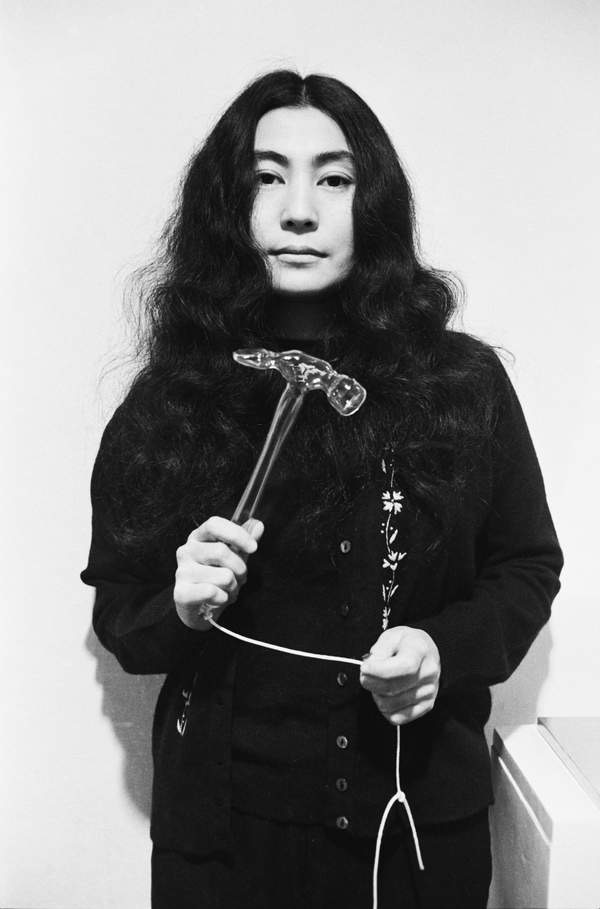Celine is full of paradoxes. From the shoe shop for Parisian children from wealthy families in September 1945, to becoming one of the most recognized fashion brands with rock-style evening wear in September 2018. From the 60s sulky logo in honor of Céline Vipana’s husband, to the logo change removing the accent from her name 50 years later. From the elegant jupes culotte that chic women all over the world used to wear, to the androgynous lines, menswear collection and tobacco-scented fragrances. All these changes are the fruit of the work of one man: Hedi Slimane. And that man is leaving.
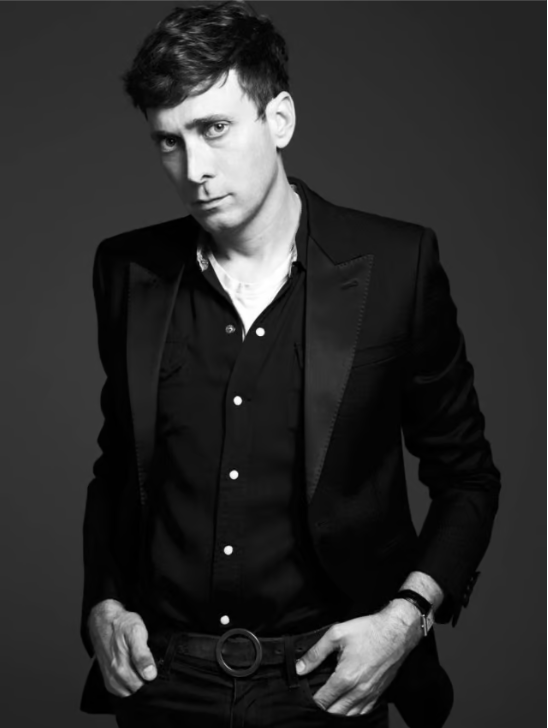
Looking at Celine’s evolution, it can be clearly observed how different creative directors shaped each era of the brand’s history. Each one contributed to the Celine we know today. Long before Hedi Slimane arrived, Celine had already established itself as a pillar of luxury, innovation and elegance.
Starting off at the end of World War II, in a post-war recovering Paris, Céline Vipiana and her husband Richard launched the boutique that would redefine luxury fashion. It started as “Celine, le bottier pour enfants”, branded with a red elephant. Initially focusing on made-to-measure children’s shoes, Celine quickly earned a reputation for it’s quality and custom-made soles. Recognized for it’s exceptional craftsmanship and sophistication, the brand soon attracted a discerning clientele. In fact, by the 1960s, Celine had already become a symbol of French elegance, also expanding beyond footwear to include other leather goods that epitomized luxury. With this purpose in 1966 they established a factory in Florence that allowed them to launch their first ready-to-wear line, focused on women and functionality, including sporty-chic pieces designed to fit the lifestyle of an active woman.
The 1980s were transformative for Celine. In 1987, the acquisition by the LVMH group provided the resources necessary for their global expansion. They were the first luxury brand to enter the Japanese market, and from there they quickly expanded to the United States. The brand’s creative evolution truly began in 1997 with the arrival of Michael Kors, known for his refined, yet accessible style. Kors brought a new vision to Celine: effortless, wearable luxury. His collections, characterized by clean lines and a blend of classic and contemporary elements, resonated with a global audience. In his vision of sporty luxury he kept a simple design, introducing pieces inspired by exotic destinations but also reinterpreting Vipiana’s Blazon Chaine emblem. Under his leadership, Celine thrived, appealing to a new generation of luxury consumers.
Following Kors’ departure in 2004, the brand struggled with a lack of creative vision, until Phoebe Philo, a visionary British designer, took the reins in 2008. Philo had already made waves at Chloé, and her arrival at Celine heralded a revolutionary era. Her debut collection in 2010 was immediately embraced by consumers which praised her as “a designer who knows what women want”. She redefined the brand with her minimalist, yet chic sensibility; introducing oversized clothes and utilitarian layers, emphasizing elegance, yet comfort. Philo’s Celine was the epitome of “quiet luxury”—understated and exquisitely crafted. Philo’s tenure saw the creation of iconic pieces such as the Luggage Tote and the Trio Bag, which became indispensable for the style-savvy. Her influence extended beyond products. Considering her first advertising campaign, she deliberately chose not to show the model’s heads to ensure the focus remained solely on the clothes. She transformed Celine’s image through curated campaigns and store designs, ensuring every detail exuded refined elegance.
Philo’s departure in 2017 marked the end of a great chapter. Her legacy firmly positioned Celine as a leader in modern luxury. The subsequent appointment of Hedi Slimane in 2018 signalled a new direction for the brand, promising fresh innovations while building on its rich heritage.
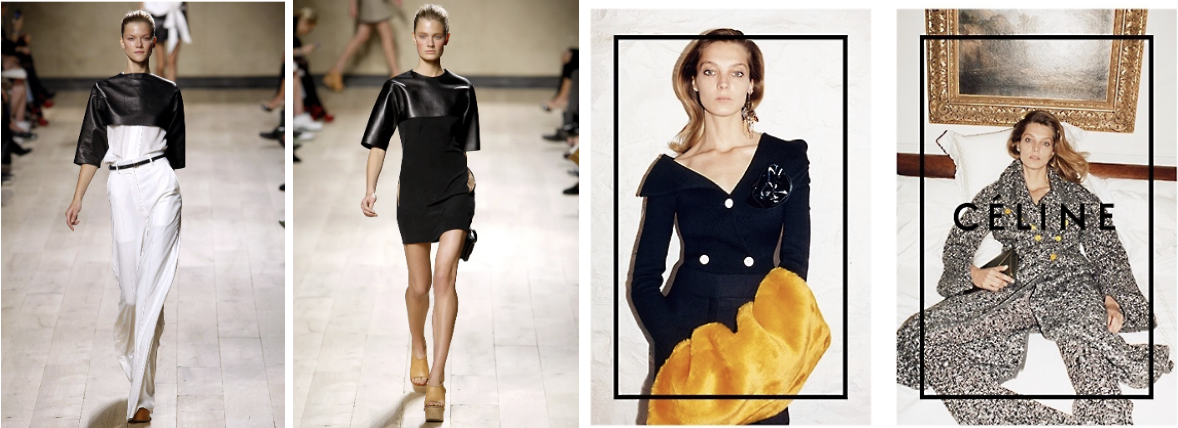
Hedi Slimane’s appointment as the creative director of Celine in September 2018 was a presage of change to come within the fashion circle. Slimane’s signature dark, rock-infused aesthetic, which oozed transformation during his tenures at Dior Homme and Saint Laurent, was instantly integrated to Celine’s brand identity. In fact, one of his first steps was to alter the trademark and logo of the brand –he removed the accent from the “E” in “Céline.” This modification was highly significant for the brand as it signaled the end of an old chapter and the fostering of modernization. This newly designed logogram was however, minimalist and unelaborated, letting one to imagine what new interpretations it would be accompanied with. This was not merely a superficial change but a powerful statement of intent. The redesigned logo was based on the trademark overhauled in the 1960’s and made clear the intentions of Celine: moving away from the outmoded styles and evolving with new ideals. Most loyalists, however, denounced changes as destructive and the #OldCéline became a viral hashtag to symbolize the end of an era.
However, it is obviously through Hedi Slimane’s fashion creations that Céline’s new identity is clearly visible. From the very first show, the new designer raised controversy.
September 28, 2018, 8 PM. Under the dome of the Invalides, speculations multiply, as the guests eagerly wait to discover the first fashion show of the designer, freshly out from Yves Saint Laurent. Will he be able to embrace the elegant, feminine aesthetic on which Céline has relied for so many years? Hedi Slimane’s answer is simple and clear: through models with slender frames wearing his iconic shiny tailoring and babydoll dresses, adorned with hardware and leather, the new artistic director erases Phoebe Philo’s much-loved intellectually tuned sophistication period in one fell swoop. The Céline Girl is no longer the elegant woman of the office, the Céline Girl is no longer a girl at all. Céline is now the youth, women and men, who aren’t afraid of monochrome or androgenicity. It is the youth that wants to party, but is still “blasé”, the youth that wears suits but is still cool. In short, it is the youth that takes Hedi back to his memories of its Parisian nights. However, this fresh start was widely criticized for being an extension of what the designer had started at Yves Saint Laurent, raising questions about his originality.
And it was at this exact moment that the Hedi Slimane era became a turning point for Céline. “We don’t enter a fashion house to imitate our predecessor”, asserts the artistic director: by maintaining this creative freedom with no limits, Hedi Slimane will associate the Céline name with ever more versatile and cross-styles fashion pieces. The Celine woman has well and truly become an androgynous fierce woman who was not restricted to female stereotypes and society’s conventions. Leather jackets, sexy mini-dresses, and cut-throat blazers made their way into his shows and these collections were brutally in contrast to the elegant muted silhouettes that dominated Philo’s period. In its place, a less refined, but still elegant, rock-and-roll vibe came in, creating a kind of beauty that made more sense to the younger audiences.
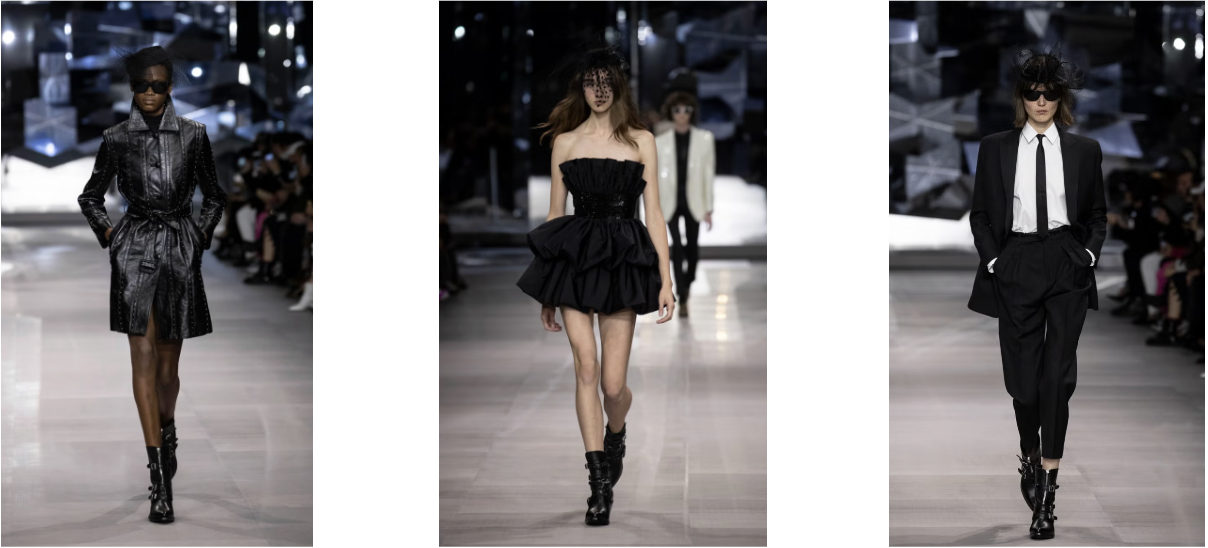
Menswear was the last touch in laying out Celine as a brand that did not bow to culturally stigmatized traditions. This was also extended by Slimane’s focus on technology and the use of fashion films that were ahead of their time, literally changing the landscape of catwalks. Cuing his interest in photography, Slimane’s works became a constant, seamless part of Celine’s campaigns and shows.
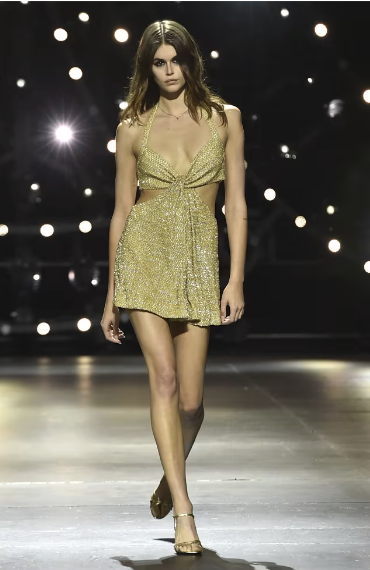
The imprint of Hedi Slimane at Celine could not be summed up by his instant influence alone, as he also helped to reposition the brand’s identity to create an enduring impact. From the following Autumn Winter 2019 show, a completely different aesthetic was adopted, Slimane unveiled a new Celine woman, or perhaps not so new, considering she seemed to be drawn straight from the brand’s 70s archives, a bourgeois Parisian from the Rive Gauche. And yet, in 2022 Slimane creates another parallel universe: rock style mingled with Parisian chic when the models took to the catwalk at the Wiltern Theater in Los Angeles.In the course of the pandemic, Celine has done the peak of the revolution transferring the physical element of shows to the digital presence. In what was a radical advancement, Celine’s artistic director Slimane made short films that presented models against backdrops of impressive architecture which he shot and directed. This cinematographic portrayal revolutionized the understanding of how luxury fashion could be appreciated in real life and showcased Slimane’s talent in combining his photography.
 Hedi Slimane’s latest show, ‘Un été français’, is a perfect example of the cinematographic sense that the designer integrated in his work. Through an ode to French summers and their elegance, he harmoniously blends the carefree spirit of youth with the ever-desirable sophistication of haute couture, inspired by the muses of the 60s (Françoise Hardy, Jeanne Birkin, etc…). Michael Rider, announced as the new designer, already had close links with Céline, having worked as design director under Phoebe Philo, where he played a key role in defining the brand’s minimalism. Therefore, it’s hard not to think that Hedi Slimane’s departure from Céline really marks the end of an era. His approach to Celine was marked by an unapologetic embrace of youth culture and an infusion of rock sensibilities. The designer’s reinterpretation of luxury, with a focus on modernity and edge, set Celine apart in the fashion world. By blending historical references with a forward-thinking ethos, Slimane redefined the maison as a bold, multifaceted entity capable of evolving with the times. Hedi Slimane’s strength lies in his ability to rework elegance, to admit that it’s not limited to one style but can be adapted to suit different worlds and aesthetics. His era at Celine showcased daring transformations, innovative strategies, and an avant-garde approach that will continue to influence how the brand navigates future creative directions. Although there were wisecracks at Slimane’s methods at the beginning, gradually, his methods were vindicated; the revolution in the style turned revenue results around, and Celine became one of the most profitable brands of the LVMH group with the sales of 2.6 billion euros.
Hedi Slimane’s latest show, ‘Un été français’, is a perfect example of the cinematographic sense that the designer integrated in his work. Through an ode to French summers and their elegance, he harmoniously blends the carefree spirit of youth with the ever-desirable sophistication of haute couture, inspired by the muses of the 60s (Françoise Hardy, Jeanne Birkin, etc…). Michael Rider, announced as the new designer, already had close links with Céline, having worked as design director under Phoebe Philo, where he played a key role in defining the brand’s minimalism. Therefore, it’s hard not to think that Hedi Slimane’s departure from Céline really marks the end of an era. His approach to Celine was marked by an unapologetic embrace of youth culture and an infusion of rock sensibilities. The designer’s reinterpretation of luxury, with a focus on modernity and edge, set Celine apart in the fashion world. By blending historical references with a forward-thinking ethos, Slimane redefined the maison as a bold, multifaceted entity capable of evolving with the times. Hedi Slimane’s strength lies in his ability to rework elegance, to admit that it’s not limited to one style but can be adapted to suit different worlds and aesthetics. His era at Celine showcased daring transformations, innovative strategies, and an avant-garde approach that will continue to influence how the brand navigates future creative directions. Although there were wisecracks at Slimane’s methods at the beginning, gradually, his methods were vindicated; the revolution in the style turned revenue results around, and Celine became one of the most profitable brands of the LVMH group with the sales of 2.6 billion euros.

So what does the future hold for the former artistic director? The obvious parallels between the Chanel aesthetic of the 1960s and Céline’s latest collection, ‘Un été français’, presented by Slimane in Paris, have prompted speculation about the designer’s future. Have we witnessed the sunset of Céline and the potential dawn of Hedi Slimane for Chanel? After all, Karl Lagerfeld himself saw Slimane as a worthy successor, dieting to fit into Slimane’s suits. Or is this an act of total creative freedom on the part of the designer, demonstrating his ability to reinterpret the codes of a House while remaining true to his own vision? Slimane’s future remains an enigma!































 Hedi Slimane’s latest show, ‘Un été français’, is a perfect example of the cinematographic sense that the designer integrated in his work. Through an ode to French summers and their elegance, he harmoniously blends the carefree spirit of youth with the ever-desirable sophistication of haute couture, inspired by the muses of the 60s (Françoise Hardy, Jeanne Birkin, etc…). Michael Rider, announced as the new designer, already had close links with Céline, having worked as design director under Phoebe Philo, where he played a key role in defining the brand’s minimalism. Therefore, it’s hard not to think that Hedi Slimane’s departure from Céline really marks the end of an era. His
Hedi Slimane’s latest show, ‘Un été français’, is a perfect example of the cinematographic sense that the designer integrated in his work. Through an ode to French summers and their elegance, he harmoniously blends the carefree spirit of youth with the ever-desirable sophistication of haute couture, inspired by the muses of the 60s (Françoise Hardy, Jeanne Birkin, etc…). Michael Rider, announced as the new designer, already had close links with Céline, having worked as design director under Phoebe Philo, where he played a key role in defining the brand’s minimalism. Therefore, it’s hard not to think that Hedi Slimane’s departure from Céline really marks the end of an era. His 
